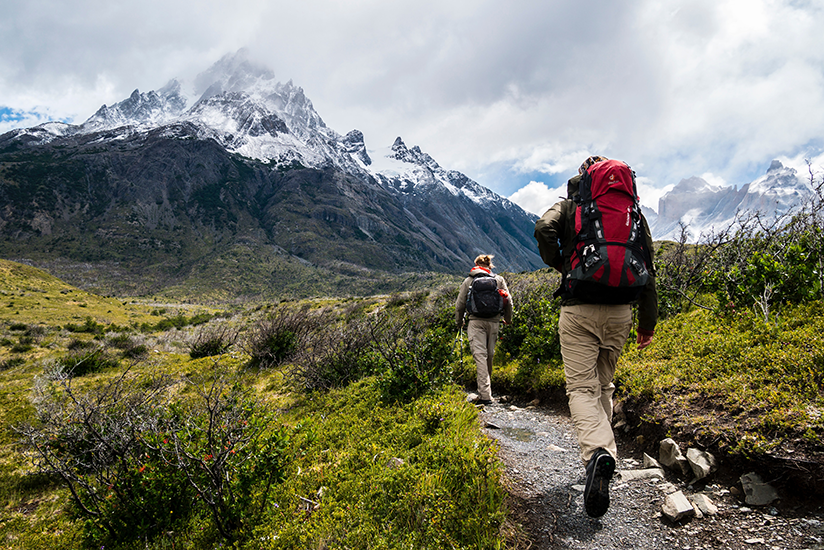Why travellers prefer Blue Cross
- Canada's #1 travel insurance brand and recognized worldwide
- Over 80 years of expertise in insurance
- $5 million travel insurance coverage, with or without deductible
- Flexible and affordable travel insurance solutions
- Free quote available online
- Travel assistance available 24/7 for any emergency, anywhere you travel

How to prevent and treat altitude sickness
Published on: September 20, 2019
Whether it’s the allure of mountainous landscapes or taking on a physical challenge, high altitude hiking and trekking attracts a lot of travellers every year. It’s an activity that comes with risks and you really should be prepared. Here’s some essential advice before you embark on your ascent.
Everything you need to know about high altitude travel
What is altitude sickness?
Altitude sickness, or acute mountain sickness (AMS) is characterized by a set of symptoms that may affect someone as they acclimatize to a reduction of oxygen in the air as they reach higher altitudes. Problems associated with AMS tend to appear at elevations of 2,500 metres or higher.
It is almost impossible to predict who might suffer from AMS. Your ability to adapt to high altitude atmospheres has nothing to do with whether you’re a professional athlete or an occasional trekker. Your health, however, can affect how AMS symptoms might arise. That’s why it is really important to for someone planning on a high climb to consult with a travel health professional before setting out. If you have particular health concerns, you should see your treating physician before you decide to embark on a high-altitude adventure.
What are AMS symptoms?
Commonly the symptoms are described like feeling you have drunk too much alcohol and along with shortness of breath, but you may be suffering from altitude sickness when:
- You experience an onset of headache hours after having scaled a new height.
- Your headache is combined with one or more of the following symptoms:
- Overall fatigue
- Loss of appetite, nausea or vomiting
- Dizziness or vertigo
- Difficulty sleeping
How to avoid altitude sickness?
Follow these recommendations to help prevent AMS:
- Avoid any intense physical activity for 48 hours after having reached a height of 2,500 metres.
- Climb gradually, and when over 3,000 metres limit your ascent to between 300 and 400 metres a day.
- If you’ve climbed a further 400 metres, spend another night at that altitude.
- Acetazolamide may be prescribed prior to your departure during your travel health clinic appointment. It should be taken at least 24 hours before you start your climb to help you acclimatize.
- Avoid alcohol and any medicines that might affect your breathing such as sleep aids, narcotics or anxiolytics (anti-anxiety meds).
How to treat AMS
First and foremost, if you develop AMS symptoms stop climbing! Wait and relax until the symptoms pass before you continue your ascent. If the symptoms persist, the wisest thing is to turn around and descend.
If you can’t descend, take acetazolamide, mentioned earlier, that will help with acclimation and reduce AMS symptoms.
AMS complications
If the proper course of action isn’t taken when someone shows AMS symptoms, the person may develop, in a worse-case scenario, a high-altitude cerebral edema (HCE). It is characterized by:
- Difficulty breathing while at rest
- Elevated respiratory and cardiac rates
- Coughing, wheezing and sniffling
- Feeling tightness around the thorax
- Bluish skin and mucous membranes
A cerebral edema is a life-threatening medical condition. An immediate descent and medical care are required.
Rest assured that cerebral edemas are rare among hikers and trekkers who climb gradually, but you should remain alert to the possibility and adopt healthy and safe climbing habits. Boot up!
Sources
Institut national de santé publique du Québec
Gabrielle Asselin